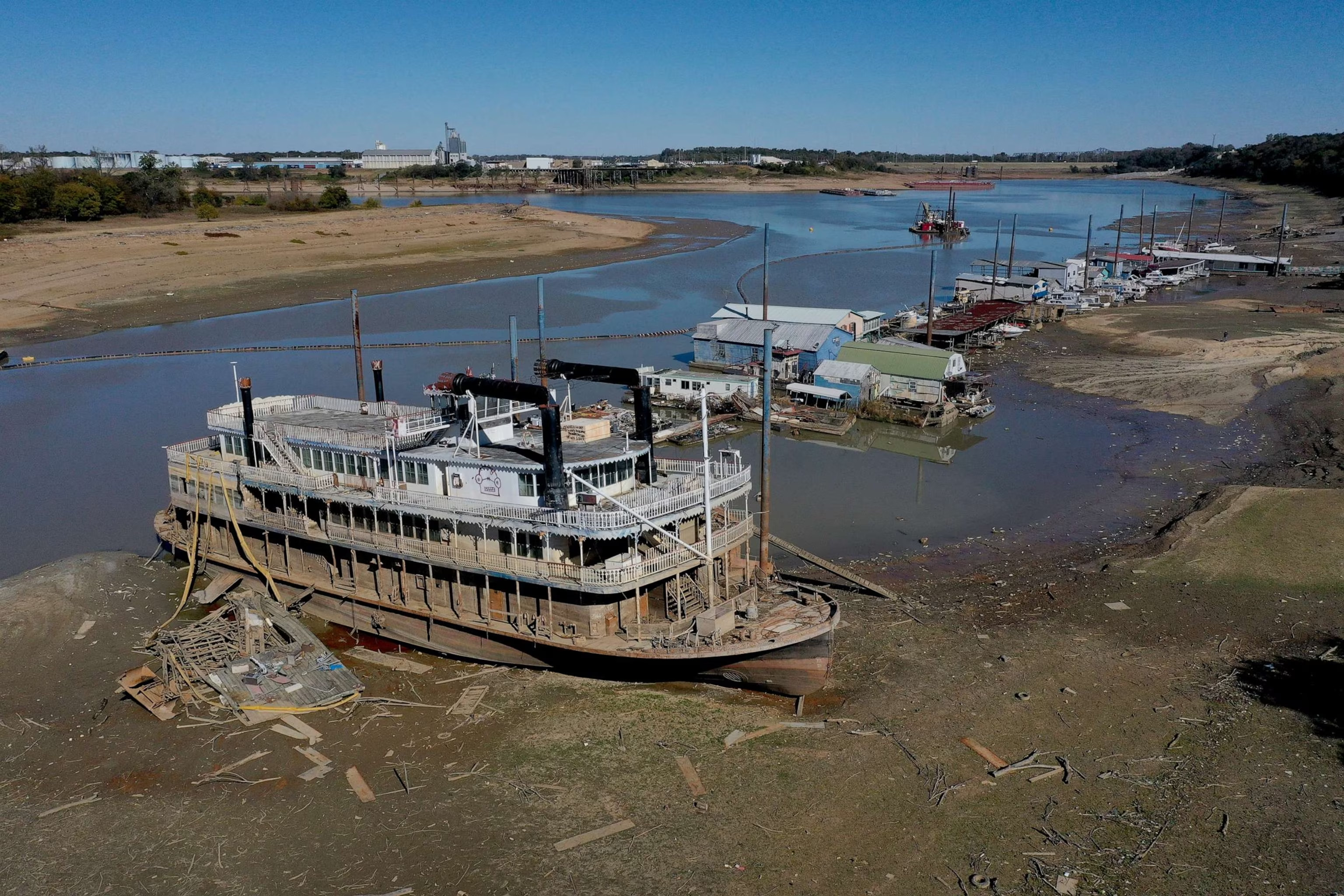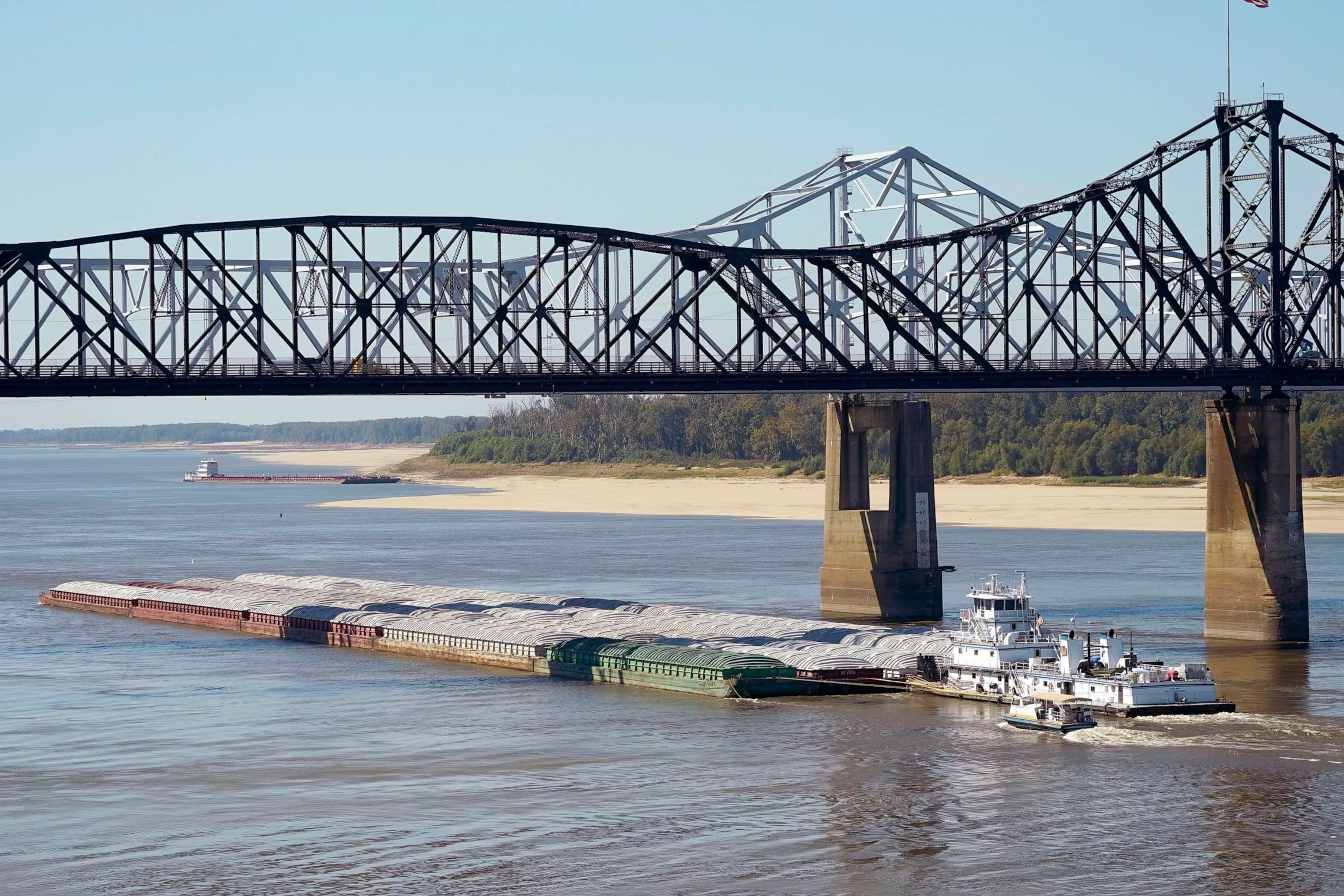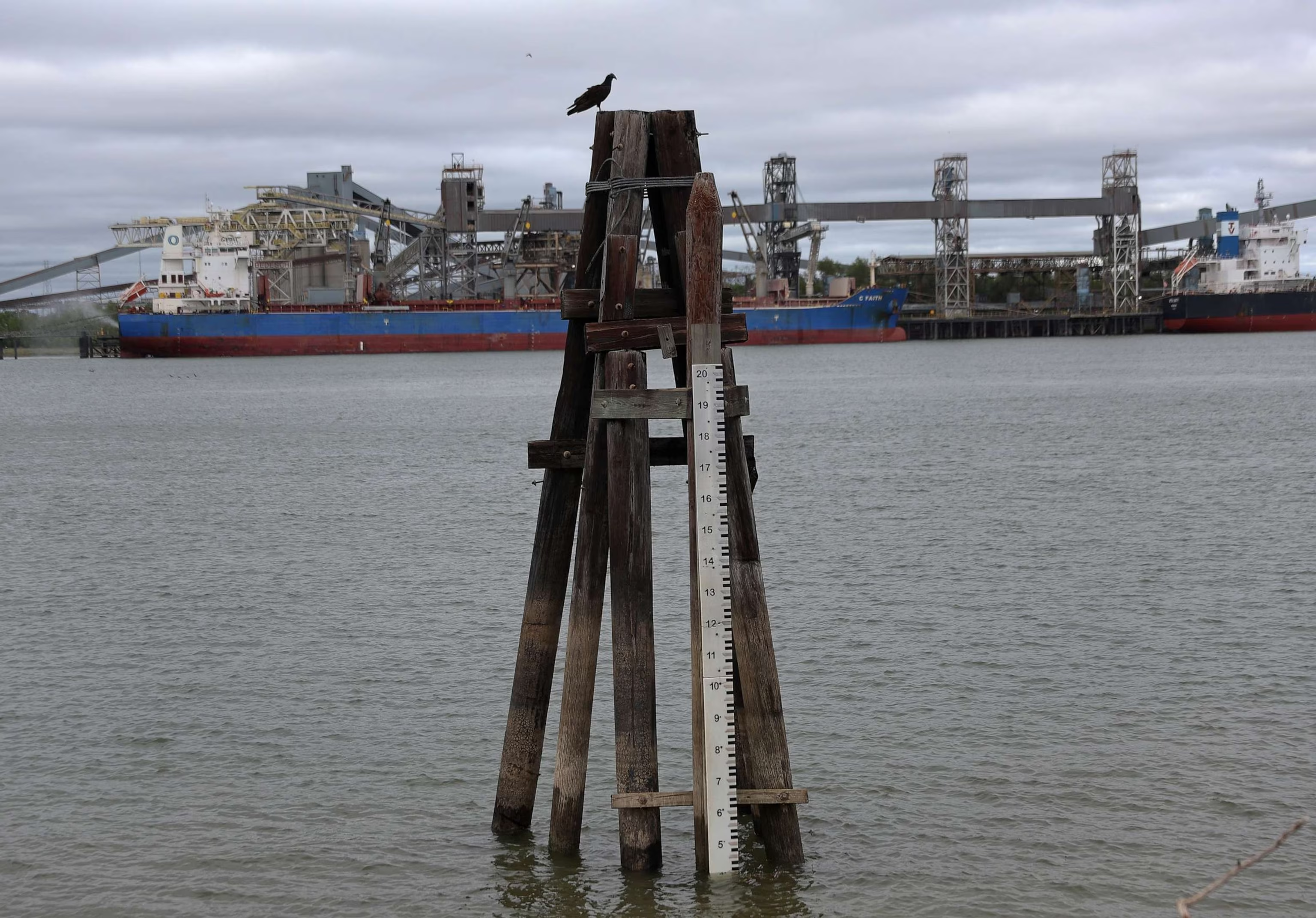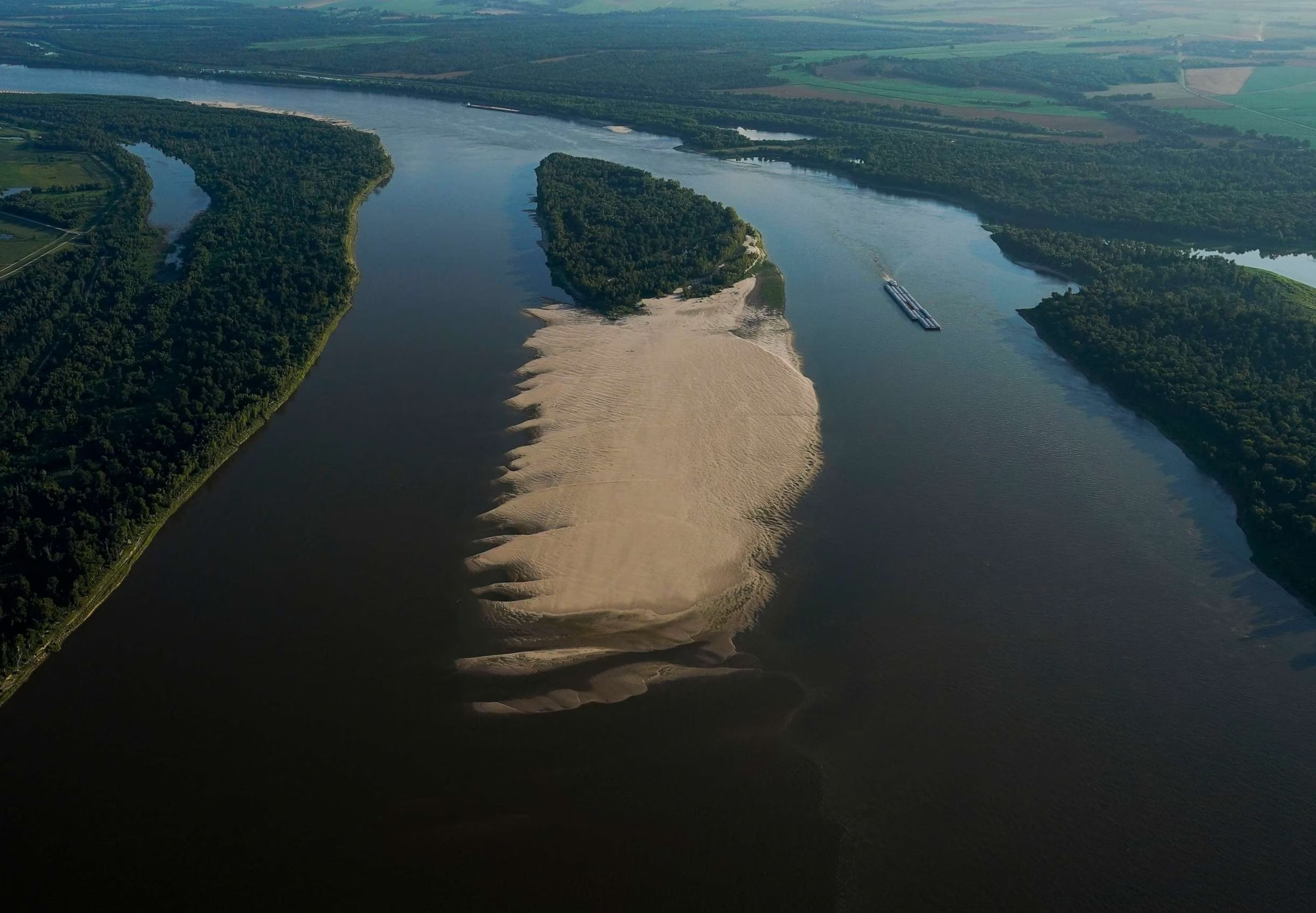This is how low water levels are on the Mississippi River right now
Mississippi River water levels have reached new record lows from Missouri to Arkansas, preventing shipments of grain and other important goods from making their way downriver during one of the busiest times of year, according to data from the National Weather Service (NWS).
The phenomenon is a repeat of last year, when hundreds of barges sat idle along the Mississippi River because of shallow waters.
On Monday morning, Mississippi River surface levels in both Memphis, Tennessee, and Osceola, Arkansas, were recorded at -11.67 feet below normal levels, according to the NWS. Low stage for both locations is -5 feet.
MORE: Saltwater in Mississippi River moving toward New Orleans much slower than expected: Officials
A long stretch of hot, dry weather has caused record-low water levels on the Mississippi River for two years in a row – an extremely rare consecutive-year phenomena, data shows. Much of the region surrounding the Mississippi River is experiencing moderate to severe drought, with exceptional drought recorded in the lower basin states, according to the U.S. Drought Monitor.
In the past, extremely low river levels on the Mississippi typically only occurred once every 10 years or fewer, National Oceanic and Atmospheric Administration hydrologist Jeff Graschel told ABC News.

Last year, hundreds of water vessels, including shipping containers, recreational boaters and even cruise ships, ran aground on the Mississippi in mud and sand that was previously covered. Water levels were so low that hundreds of barges were stuck for weeks as they attempted to transport crops down the river.
MORE: Louisiana governor requests Federal Emergency Declaration for saltwater intrusion

To make the river navigable, the U.S. Army Corps of Engineers routinely dredges the Mississippi, removing sediment and debris from the riverbed and making the navigation channel deep enough for barges. But periods of intense drought require more dredging.
Earlier this year, the U.S. Army Corps of Engineers' Mississippi Valley Division started dredging at known spots that need more frequent maintenance, as well as contracting extra dredges to assist with the work.
MORE: Bodies of water all over North America are drying up due to drought, climate change: Experts
In dire situations, the Corps can also release water from upstream reservoirs to replenish the waterway.
The Mississippi River is one of the most important trade routes in the continental U.S., with September and October marking the start of the prime time for grains to move down the river to be shipped through New Orleans and the Gulf of Mexico following the fall harvest.

Jeff Worsham, the Osceola port manager for Poinsett Rice and Grain, an Arkansas-based farming company, told ABC News that though harvests are about 90% complete, farmers are still "struggling along" to move their harvests down the Mississippi.
MORE: Barges idling along Mississippi River sign of supply chain woes to come should drought worsen: Experts
Barges are not being filled to capacity because they are hitting the bottom of the river at the loading dock, Worsham said, adding that partial loads are being added to the barges once they hit deeper waters.

In addition, the power plant in Osceola has not been able to generate hydropower for three weeks because insufficient water is passing through the intake pipes, Worsham said.
It does not appear that the Mississippi River watershed will see any relief in the next week, forecasts show. Some rain is possible in the Ohio Valley and the upper river, but it likely won't be enough to end the drought and replenish water levels.
Disclaimer: The copyright of this article belongs to the original author. Reposting this article is solely for the purpose of information dissemination and does not constitute any investment advice. If there is any infringement, please contact us immediately. We will make corrections or deletions as necessary. Thank you.

